
|
A "trapper" family gets ready for the morning. Even while
living in the field, some things never change, as this little girl having
her hands washed by mom will attest. |
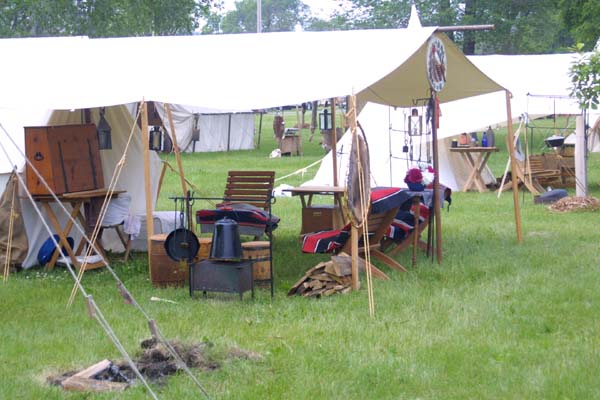
|
Some of the camp sites could be pretty elaborate. This
one features a mixture of Indian, French, and English elements which is probably
pretty representative of how men lived back in those times. |
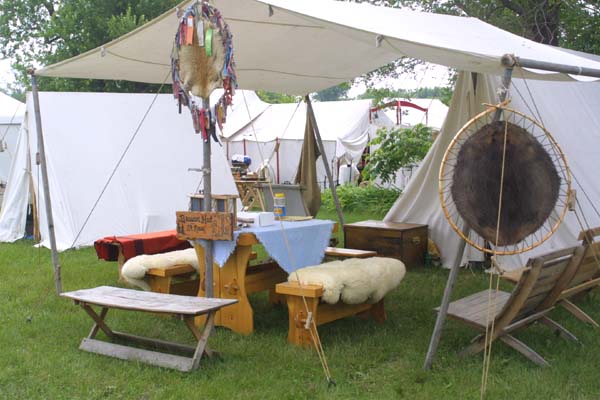
|
To facilitate travel, all of these furnishings either
fold up, knock down or come apart. When completely assembled, they offer all
of the comforts of home. |

|
A somewhat more simple campsite. Still, it looks comfortable
enough. |
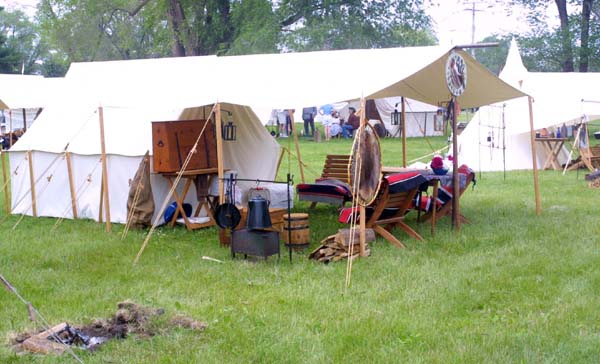
|
An overall look at one of the campsites shown above.
In this view the length of the tent and height of the walls are visible,
along with the firepit off to the side, and the protective canopy. |
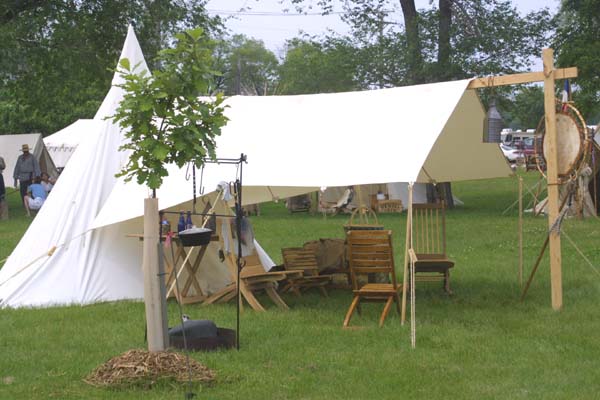
|
A comfortable but less elaborate camp. All of these tents
are made of cotton canvas. This is the same material, though of a different
color, as what blue jeans are made from. |
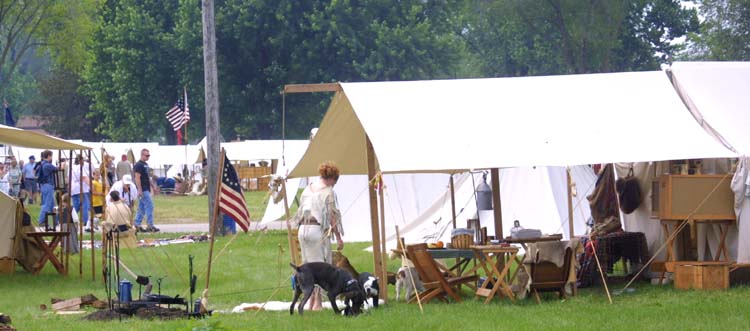
|

|
A fairly simple campaign style tent is to the left, while
much more elaborate lodge style tents are shown in the photos above and
below. |

|
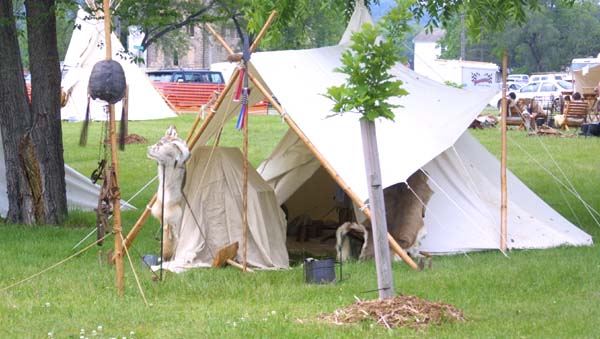
|
Left:
A rather small trapper's refuge is built around a pole frame. The "pack
animal" in front of the entrance is not real.
Below:
Two very simple structures, which could be put up quickly with little trouble.
These are certainly not as comfortable as some of the more elaborate models,
but are just the thing for a man who travels quickly. |

|

|
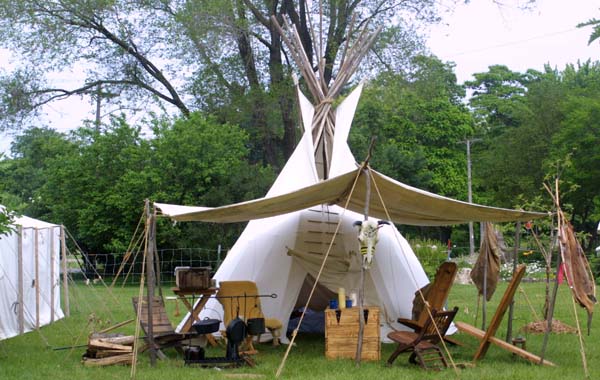
|
Assorted styles of living quarters reflect different
interests among those attending the rendezvous. Teepees of differing sizes
and sophistication levels abound, as in this example at left. There
are also large numbers of campaign tent inspired dwellings as in the example
shown above and below. These were inspired by the campaign tents used by
armies in the field. many trappers had at one time served as army scouts
or had been in the army. |

|
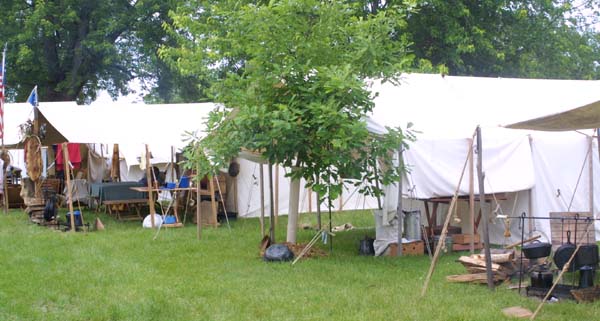
|
A side street of sorts is formed by a row of tents serving
as living quarters. In order to keep the piece, the areas are zoned into
business and living areas so that the commercial traffic does not disturb
those living on the grounds. |
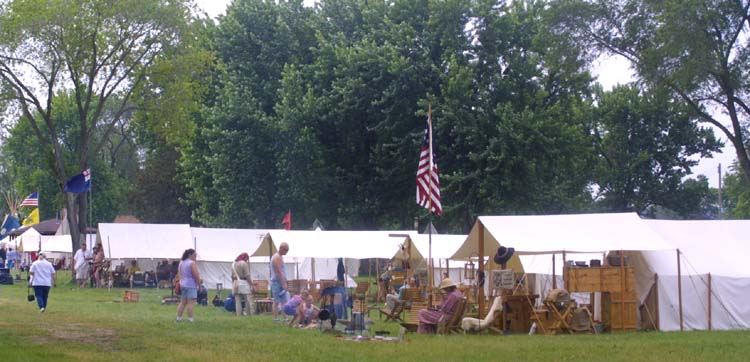
|
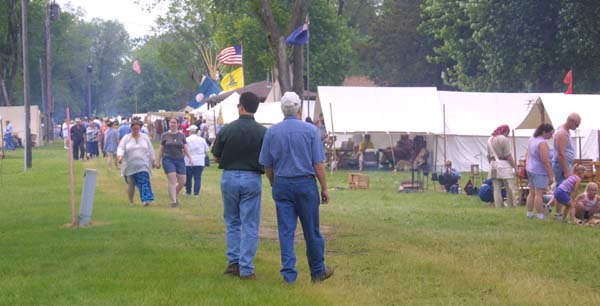
|
Ambling down one of the many main streets lined with
tents offering goods, services, food or entertainment. |
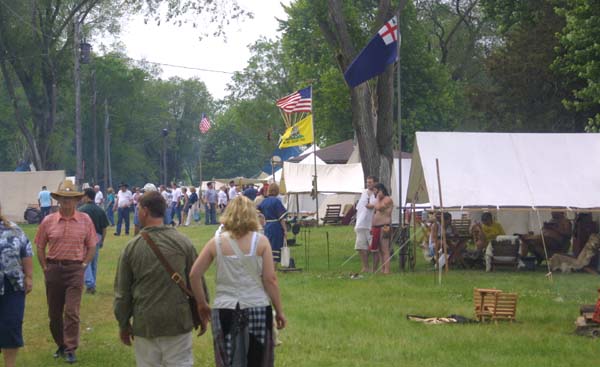
|
The bearer of the scantly clad middle aged body
in front of the scandinavian flag is a bit too close to nature. Still, this
is probably his only chance to dress like a native without getting (too
many) disapproving looks from people passing by. |

|
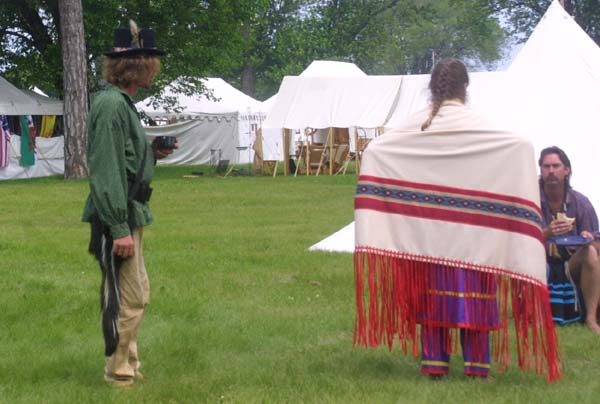
|
A girl shows off an Indian shawl. The photo does not
do it justice. The shawl is made, not of cloth, but of very soft, smooth,
and thinly shaved white leather. |

|
Relearning an old art, this man makes arrow heads from
pieces of flint, much as the Indians of hundreds of years ago produced them.
At his feet lie the remains of some failed efforts, and practice strokes. |

|
Showing how it is done. The pieces are knocked off fracturing
the flint with a mandrel. Several mandrels of different hardness and weight
are used. |
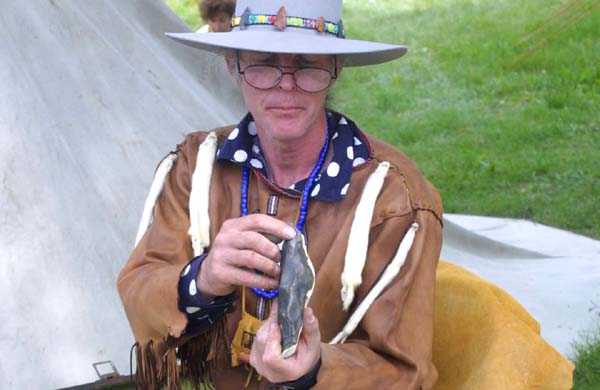
|
Examining the flint closely to look at the grain of the
piece. This gives a clue as to how, where, and in what direction the next
blow should be given. |
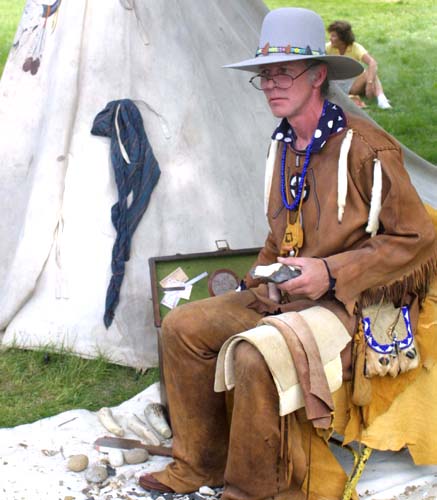
|
Picking the right mandrel. In some ways this is a bit
like being a diamond cutter. In both cases, the man working the stone needs
to know the grain and structure of the particular piece he is working on
or it will be ruined or shattered. |

|
Though no jug is in evidence, this is definitely a jug
band. The music is a sort of a cross between folk, ballad, and minstrel. |